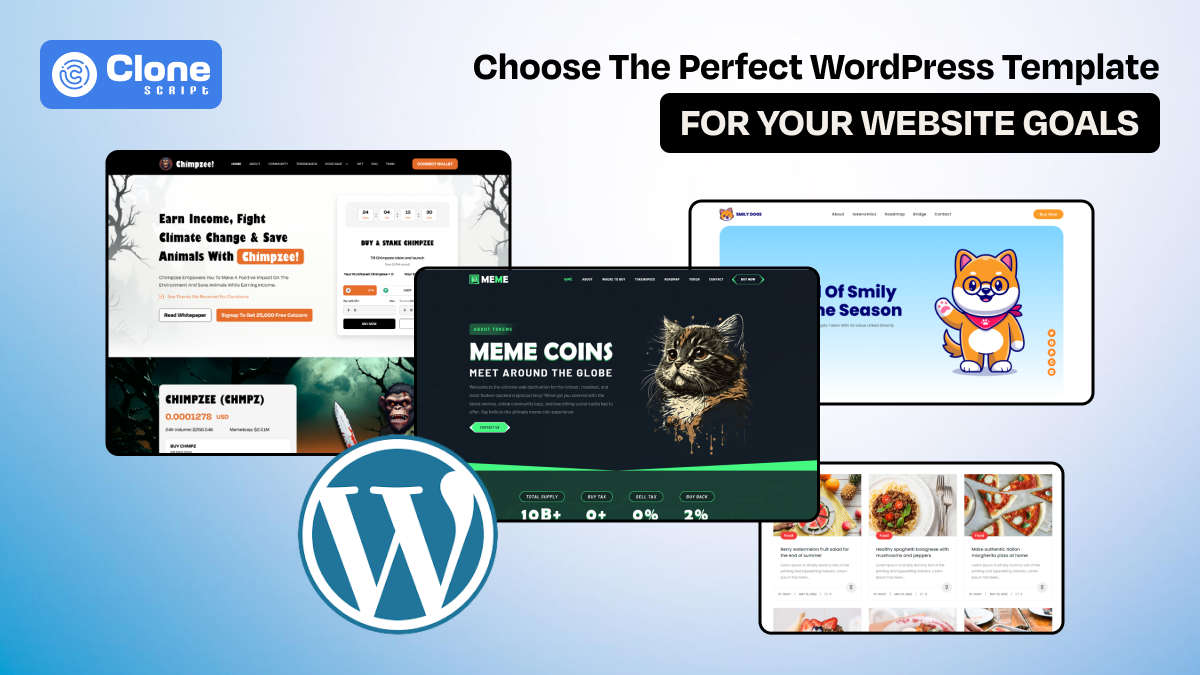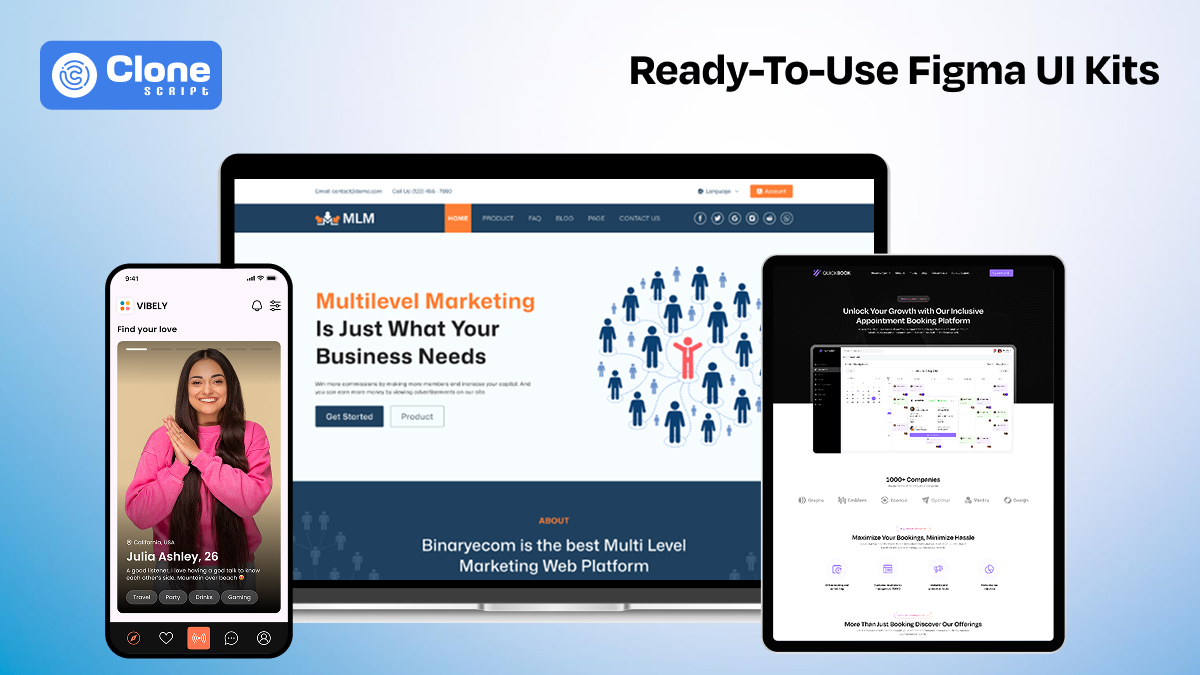How to Choose the Perfect WordPress Template for Your Website Goals
A website template isn't just a starting point. It’s a strategic decision that can either support or stall your business growth.
For business owners building a WordPress site, the challenge isn’t finding a theme. It’s finding one that aligns with your goals. Most templates look great in a demo. But are they fast, SEO-ready, mobile-responsive, and built to convert? That’s where many choices fall short.
Choosing the right WordPress template means thinking beyond aesthetics. It’s about selecting a design framework that reflects your brand, delivers performance, and helps your website serve its true purpose, whether that’s generating leads, selling products, or building trust.
In this guide, we’ll walk through a focused, practical approach to choosing a WordPress theme that’s not just beautiful, but built for real business results.
Step 1. Define Your Website Goals First.
Choosing a WordPress template starts with understanding your website's purpose. Your business goals should guide the design and structure, not just visual preferences.
A clear focus ensures the template you choose supports the results you want, from lead generation to content delivery or online sales.
-
Book More Consultations: To drive inquiries and conversions without extra development, service-based businesses should look for a WordPress theme with built-in lead generation features, such as contact forms, testimonials, and CTA buttons.
-
Selling Products Online: For e-commerce, use a WordPress template with WooCommerce integration. Check if it has features like product filtering and secure checkout. A goal-aligned design improves the shopping experience and directly impacts revenue.
-
Publish Regular Content: Choose a blogging WordPress site template that features structured categories, easy navigation, and clean typography. This enhances readability and improves user retention.
-
Build Brand Credibility: If launching a meme coin website, choose a website theme that showcases roadmap, tokenomics, and a pre-sale widget to maintain trust and professionalism. There’s no need for any custom coding or layout modification.
Step 2. Prioritize Speed & Lightweight Code.
Website speed optimization is a very important element not just for the best user experience, but it can also prove the USP of your brand. In a premium WordPress template, the speed is already tested and managed wisely. It means the user never faced a glitch when visiting a site.
In other words, a fast-loading website is a kind of source to get better SEO optimized rankings.
Why?
Google, like search engines, prioritizes that the user has to face minimal interruption while getting information online.
-
Minimal Scripts: Select a WordPress website theme that avoids loading unnecessary external scripts. Clean code enhances performance and improves your site’s score on tools like PageSpeed Insights.
-
Conditional CSS/JS Loading: A lightweight WordPress template for speed will only load assets when needed. This reduces page weight and speeds up your entire website.
-
Avoid Heavy Builders: While page builders offer flexibility, avoid themes that rely too heavily on them. Excessive builder use adds extra code, hurting performance. That indicates you’re stuck in the framework that you never intended to be.
-
Built-in Speed Optimization: Look for templates that promote performance, like caching, minified files, or lazy-loading features, to improve site speed. Don’t just see the visuals, but also the template demo and get real-time insights.
Note: Avoid flashy but bloated templates that slow your site down and hurt your long-term business goals.
Step 3. Ensure Responsive & Mobile-Friendly Design
A responsive template ensures your website looks and works great across all devices. With mobile traffic dominating the web, your chosen WordPress theme must deliver a seamless user experience on phones, tablets, and desktops. It is improving engagement and helping with mobile-first SEO rankings.
-
Flexible Layouts: Use a flexible template that automatically adjusts columns, grids, and elements for all screen sizes. This improves usability and accessibility across devices.
-
Touch-Friendly Navigation: Choose a mobile-friendly WordPress template with easy-to-tap buttons, collapsible menus, and simple scrolling. These design details boost conversion rates on mobile.
-
Image and Font Scaling: The best WordPress website design tips are to scale visuals and typography based on screen resolution for a clear, legible, and appealing presentation.
-
Optimized Mobile Speed: A responsive WordPress theme for blogs or services should also load quickly on 3G or 4G networks to reduce bounce rates and improve overall satisfaction.
Step 4. Evaluate SEO-Friendly Features
Building a website from a template can’t be ranked on Google and other search engines. This kind of illusion is common.
But the reality is different.
Even nowadays, startups depend on these templates to build their platform and rank well on the search results. There’s no rocket science behind it.
Just follow the tips when picking a WordPress theme.
-
Semantic HTML Markup: Prefer a template that uses proper HTML tags. So, it is easier for search engines to understand your content hierarchy and purpose.
-
Optimized Headings: Maintaining a correct heading structure (H1, H2, etc.) in a web page improves both readability and search engine interpretation.
-
Schema Integration: Some SEO-optimized WordPress website templates offer built-in schema support. It helps your content appear with rich snippets in search results.
-
Plugin Compatibility: Your theme must work well with leading SEO plugins like Yoast or RankMath, as it offers advanced controls without layout conflicts.
Step 5. Check Customization & Flexibility
Customizing a website template is easy, especially with WordPress. Some free templates don’t have the option to personalize the content or change the color, for example. So, when you search for the best theme online, make sure it has a choice to tweak any of the sections easily. After all, the branding matters when you compete with giant competitors.
-
Global Styling Controls: Pick themes with easy-to-use controls for fonts, colors, and spacing. This maintains brand consistency across your business website.
-
Builder Support: A good web template supports Gutenberg, Elementor, or similar tools to make visual edits and layout changes intuitive.
-
Pre-Designed Page Templates: Ready-to-use layouts for services, blogs, portfolios, and more save time while giving a professional presentation.
-
Header/Footer Flexibility: Choose themes that offer custom headers and footers with widget areas and layout options to personalize the user experience.
Step 6. Support, Updates & Community Trust
Ongoing support and regular updates are essential for a secure and stable WordPress site. A well-maintained theme optimized for compatibility with new WordPress versions and plugins. Trusted WordPress web templates from reputable developers offer long-term reliability and help when you need it most.
-
Frequent Updates: Choose a WordPress template that’s actively maintained. Regular updates patch security vulnerabilities and keep features modern.
-
Developer Support: Look for themes that offer email, ticket, or forum-based support, so you’re not left guessing during setup or edits.
-
Community Feedback: Themes with large, active communities come with better resources, shared solutions, and plugin compatibility feedback.
-
Clear Documentation: Comprehensive setup guides and tutorials make onboarding easier and reduce dependence on developers for basic customization.
Step 7. Aligning Template Choice with Your Goals
Your website’s function should always dictate your design. Whether you run a service business, blog, online store, or personal brand, choosing a WordPress template that supports your goals ensures long-term success. It’s not just about looks. It’s about aligning structure, usability, and features with purpose.
Conclusion
A WordPress template should do more than make your site look good. It should help your business work better online.
If you're a local service provider, your theme should simplify lead generation. If you're building a blog, it should improve how people find, read, and share your content. Selling products? Your template must support smooth browsing, checkout, and mobile use. The point is simple: design must follow intent.
Take the time to choose a WordPress theme that works as hard as you do. The results will speak for themselves.
Get Professional Website Templates
FAQs
-
Why is choosing the right WordPress template more than just aesthetics?
Because beyond looking good, your theme influences speed, SEO, mobile responsiveness, conversions, and supports your business goals—whether it’s generating leads, selling products, or building credibility.
-
How do I begin selecting a WordPress theme that aligns with my goals?
Start by defining your website’s purpose—are you aiming to book consultations, sell products, publish content, or establish brand credibility? Your theme should serve that purpose, rather than just being visually appealing.
-
How important is mobile responsiveness?
Extremely. Most web traffic is mobile-based, and a responsive theme must offer flexible layouts, touch-friendly navigation, scalable visuals, and fast loading on mobile networks. This supports both engagement and mobile-first SEO.
-
How much customization should a theme offer?
Opt for themes that offer:
-
Global styling controls (colors, fonts, spacing)
-
Compatibility with builders like Gutenberg or Elementor
-
Pre-designed templates for pages (services, blogs, portfolios)
-
Flexible headers/footers with widget areas
These features make branding and content updates easier.
-
Where can I find reliable WordPress themes?
You can find reliable sources, including:
-
The official WordPress.org directory and WordPress.com gallery
-
Individual providers like All Clone Script platforms
-
Trusted third-party marketplaces like Creative Market or StudioPress
These platforms provide filtering options for layout, features, and industries, and often offer previews and demos.
 BTC - Bitcoin
BTC - Bitcoin
 USDTERC20 - USDT ERC20
USDTERC20 - USDT ERC20
 ETH - Ethereum
ETH - Ethereum
 BNB - Binance
BNB - Binance
 BCH - Bitcoin Cash
BCH - Bitcoin Cash
 DOGE - Dogecoin
DOGE - Dogecoin
 TRX - TRON
TRX - TRON
 USDTTRC20 - USD TRC20
USDTTRC20 - USD TRC20
 LTC - LiteCoin
LTC - LiteCoin







